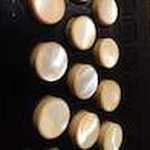Back in the mists of time when the Club system was thriving. Rather than learn to read music various tab systems were developed. Learning standard notation will always be the better option. But a huge amount of music published in these old tab formats makes it worth learning. The modern evolution of these formats is still popular among the styrian harmonica players and there are some good resources out there. Most of these are in German and this is a really good one. https://www.stammtischmusik.at/noten/griffschrift.shtml . This has some folk tunes in Griffschrift as well as standard notation
How do I read this?
So how do we read this? Styrian players still use the most common, Griffschrift This was an evolution of the helbling system developed in the mid 1970’s. There is a fair amount on youtube where you can hear what is being played enabling you to de-cypher the system. Bear in mind that the Steirische has at least three rows so music specifically for these may not fit your club, but you can usually find something to fit on the accidental row
Let’s consider the diagram below.
- The note lengths equate to standard notation crotchet, quaver etc in this diagram they are all crotchets, i.e one quarter of a semibreve in 4 time . (or in laymans terms a single note)
- To the right of the diagram the little dots represent the keys on your keyboard
- The right hand white row is your outside row
- The middle grey row is your inside row
- The short row is your accidental row nearest the bellows

So in this example the notes equate to the buttons which the lines go through. i.e these “notes” in this diagram only equate to the inside (grey) row. the “gleighton” being the button which plays the same note push and pull (normally a different texture or colour to the rest of the row) . This is always on the middle line…..easy to remember
If the notes are between the lines they relate to the buttons which line up with the outside row i.e the long white row. In the example below the final note relates to the button on the outside row coloured black.

Simply put this is fairly straightforward. in Griffschrift the appearance of “proper” music confused me at first but the treble side is pretty simple really. For the treble side most griffscrift follows this pattern
What about Push and Pull in Griffschrift
Push and pull . or squeeze and draw are notated in the example below by the underline. Underlined means push / squeeze

And the Bass?
The letters below the staff indicate which bass to play. This can be a bit of a minefield. Different “flavours” of griffschrift denote the bass buttons in different ways. This is the most common.

The diagram below shows the bass buttons in relation to the bellows at the top

For context the following is an example of the Helbling system, one of the ancestors
And another curious system Habla







